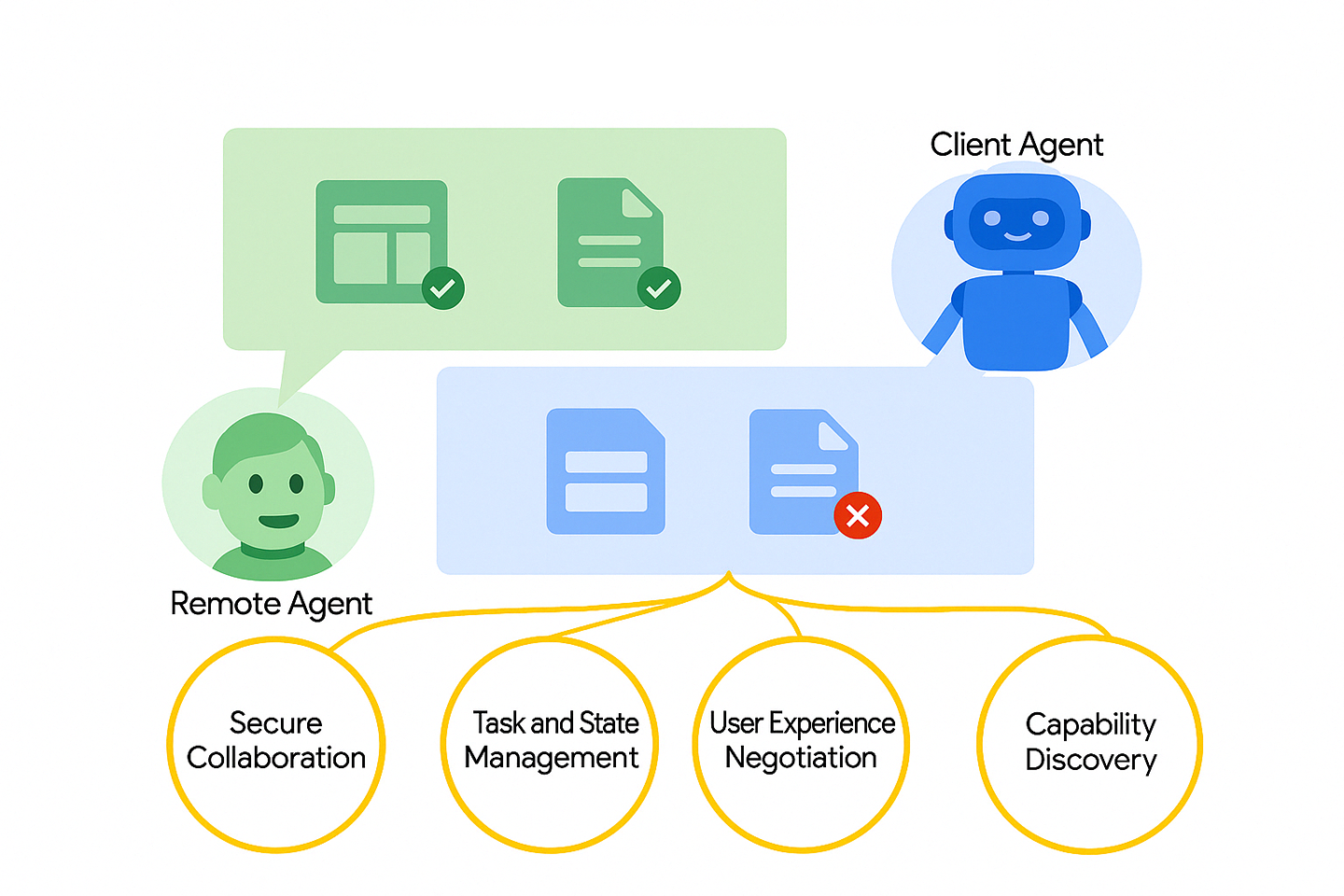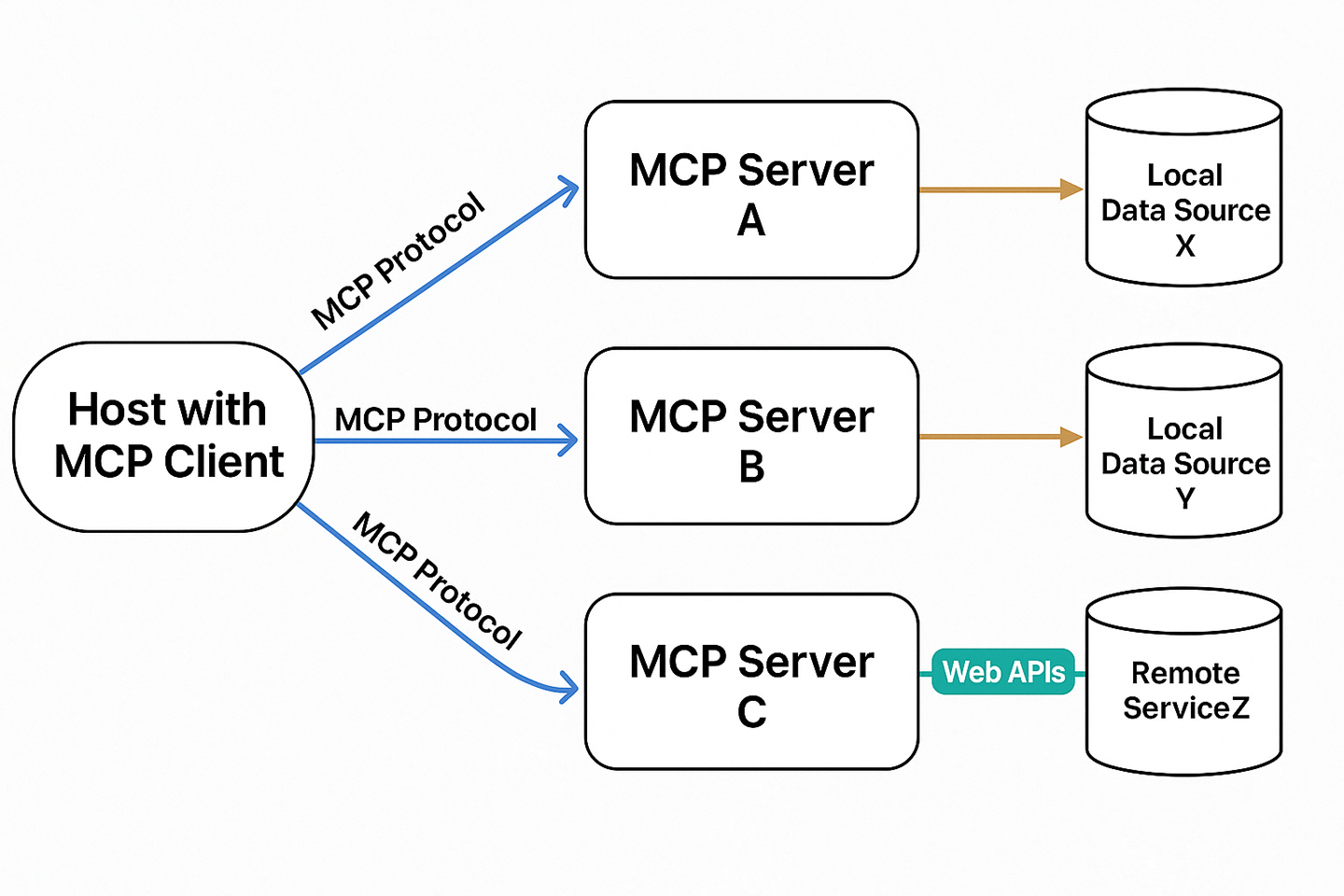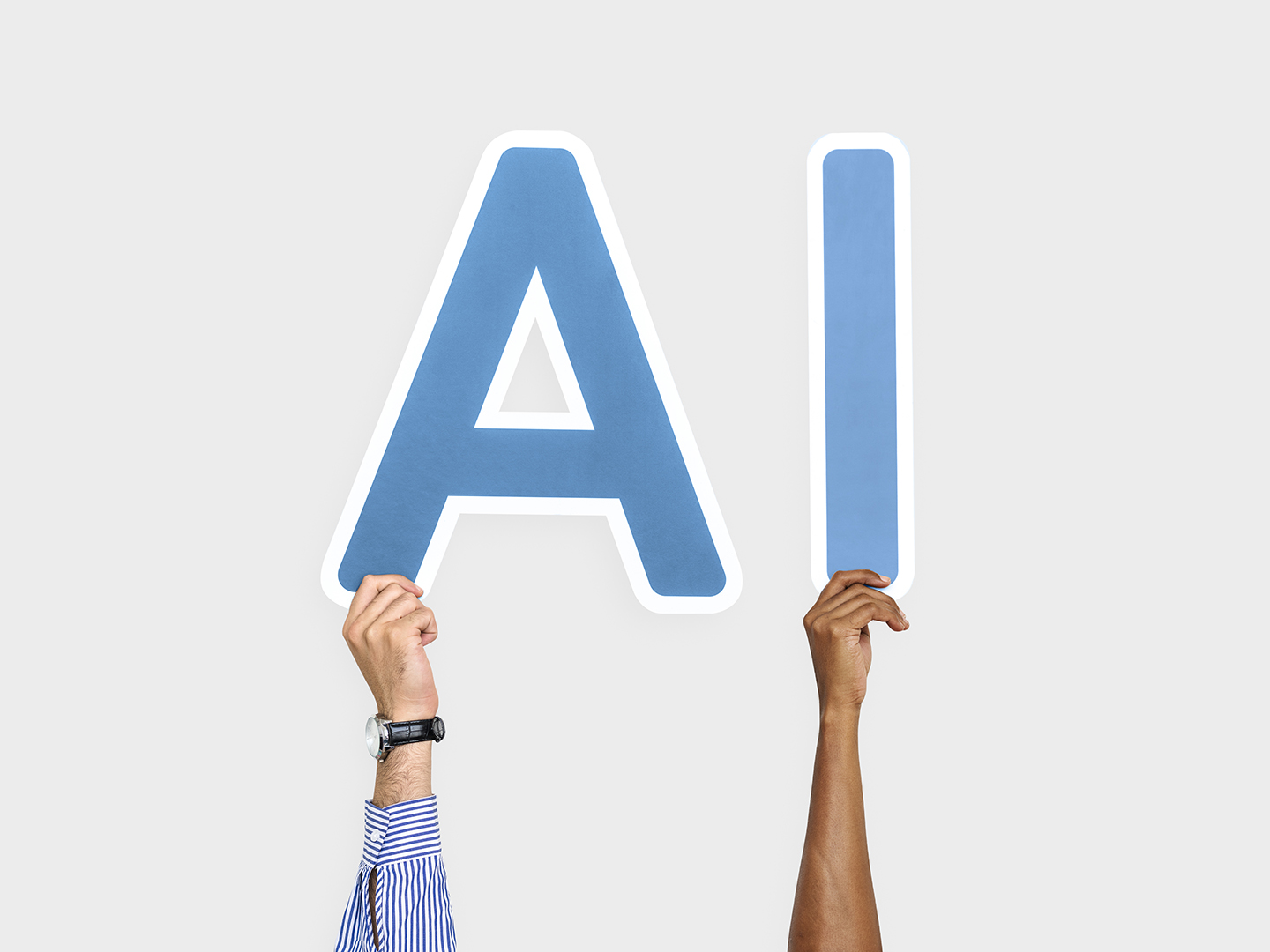
A2A vs MCP: Will it be a battle of AI proxy protocols?


A2A vs MCP: Will it be a battle of AI proxy protocols?
Understanding the AI Agent Protocol Battle
Have you ever wondered how all those AI bots actually “talk” to each other? Like, how do self-driving cars respond to traffic lights, or how do warehouse robots collaborate to move packages — what’s going on behind the scenes? The answer lies in AI agent protocols, specifically A2A vs MCP — two groundbreaking frameworks that are revolutionizing multi-agent systems. As someone who has been following the AI space for years, I’ve seen firsthand how these protocols are changing the way intelligent agents interact. You’ll definitely want to learn about them.
A2A (Agent-to-Agent) and MCP (Model Context Protocol) are more than just some technical jargon. They’re the invisible “handshakes” that will determine whether future AI systems can work together like a symphony orchestra or a kindergarten band. Think about it — we’re not just talking about code. This is the DNA of how AI will solve everything from climate modeling to stock market predictions. Whether you’re building neural networks or just bingeing tech podcasts, understanding the A2A vs MCP battle is your behind-the-scenes pass to the AI revolution.
What Are A2A and MCP? Defining the Protocols
A2A: Google's Vision for Agent Interoperability
A2A, or Agent-to-Agent protocol, is an open-source framework developed by Google that enables AI agents to communicate and collaborate efficiently. Launched in May 2024, A2A establishes a standardized method for agents to exchange information, request assistance, and delegate tasks within a multi agent system.
At its core, A2A uses a simple yet powerful JSON-based communication format, allowing agents to share context, goals, and capabilities. This protocol supports both synchronous and asynchronous communication patterns, making it versatile for various application scenarios. The primary goal of A2A is to create an ecosystem where agents can seamlessly work together regardless of their underlying models or creators.
MCP: Anthropic's Approach to Model Interactions
MCP (Model Context Protocol), developed by Anthropic, takes a different approach to agent communication. Introduced around the same time as A2A, MCP focuses on standardizing how AI models interact with their context, emphasizing the exchange of structured information between models and their environment.
MCP is designed with a strong emphasis on security and contextual awareness. It provides a framework for models to understand and manipulate their context, allowing for more nuanced interactions. Unlike A2A, which primarily focuses on agent-to-agent communication, MCP addresses the broader question of how models interact with their operational environment within a multi agent system.
The Context: Why A2A VS MCP Matters Now
The emergence of A2A VS MCP comes at a critical juncture in AI development. With the explosive growth of large language models (LLMs) and increasingly sophisticated AI systems, the need for standardized communication protocols has never been more urgent.
Global tech companies are racing to establish their protocols as industry standards, recognizing that whoever defines how AI agents interact could significantly influence the future AI landscape. This competition is reminiscent of earlier protocol wars in computing and the internet, where early standards often shaped decades of technological development.
The current state of the industry demonstrates a clear trend toward multi-agent architectures, where complex tasks are distributed among specialized agents. According to recent studies, multi agent systems can improve problem-solving efficiency by up to 40% compared to single-agent approaches. How can we effectively harness this potential without standardized communication protocols? A2A VS MCP represents two competing answers to this pressing question.
Core Functionalities: How A2A and MCP Work
A2A's Approach to Multi Agent System Communication
A2A implements a message-passing architecture where agents exchange structured requests and responses. The protocol defines several key components:
1. Agent Capabilities: Agents can advertise their abilities, allowing others to understand what tasks they can perform.
2. Request Format: Standardized JSON structure for task requests, including context, goals, and constraints.
3. Response Handling: Clear conventions for success, failure, and partial results.
4. Streaming Support: Enables real-time communication for dynamic scenarios.

A typical A2A interaction might look like this: Agent A needs to translate a document but lacks this capability. It sends a request to Agent B, which specializes in translation. The request includes the document and specific requirements. Agent B processes the request and returns the translated document. This entire exchange follows A2A's standardized format, ensuring smooth communication.
MCP's Context Management Approach
MCP takes a context-centric approach with these key features:
1. Structured Context: Defines how models interact with their context window.
2. Tools and Functions: Standardized ways to extend model capabilities.
3. Security Boundaries: Clear delineation of what models can access and modify.
4. State Management: Protocols for maintaining and updating context state.

In an MCP-based multi agent system, the focus is on how each agent understands and manipulates the shared context. For example, when multiple agents collaborate on analyzing a dataset, MCP ensures they have a consistent view of the data and clear protocols for updating their findings.
Performance Comparison: A2A VS MCP in Action
When comparing A2A VS MCP, several performance metrics stand out:

In large-scale tests, A2A has demonstrated the ability to coordinate thousands of agents with minimal performance degradation. MCP, while handling fewer concurrent agents, excels in scenarios requiring deep contextual understanding.
A real-world benchmark comparing the protocols showed A2A performing 15-20% faster in simple task delegation scenarios, while MCP demonstrated 25-30% better accuracy in complex reasoning tasks requiring nuanced context understanding. How do these differences translate to your specific use case? The answer depends largely on your prioritization of speed versus contextual depth.
Pros and Cons: Evaluating A2A VS MCP
A2A Advantages
1. Simplicity: Easier to implement and understand, lowering the barrier to entry.
2. Performance: Lightweight design results in faster communication.
3. Scalability: Excellent for systems with many agents.
4. Flexibility: Can be adapted to various domains and agent types.
5. Community Support: Backed by Google's extensive developer ecosystem.
A2A Disadvantages
1. Less Context Awareness: Simplified protocol may miss nuanced contextual information.
2. Limited Security Model: Security considerations are less comprehensive.
3. Still Evolving: Some aspects of the specification remain in flux.
4. Requires External Orchestration: For complex workflows, additional coordination logic is needed.
5. Less Focused on Model-Specific Features: Doesn't deeply address LLM-specific interaction patterns.
MCP Advantages
1. Rich Context Handling: Superior management of complex contextual information.
2. Strong Security Model: Built with robust security boundaries from the ground up.
3. Model-Centric Design: Optimized for how modern LLMs operate.
4. Comprehensive Tool Integration: Sophisticated framework for tool usage.
5. Detailed State Management: Explicit handling of state changes in multi-turn interactions.
MCP Disadvantages
1. Higher Complexity: Steeper learning curve for implementation.
2. Performance Overhead: Richer context representation comes with some performance cost.
3. Less Scalable: May face challenges in very large agent networks.
4. Tighter Coupling: More closely tied to specific model architectures.
5. Smaller Adoption: Currently has a smaller developer community than A2A.
Use Cases: Where Each Protocol Excels in Multi Agent Systems
A2A is particularly well-suited for:
- Large-scale agent networks (e.g., smart city management systems)
- Applications requiring rapid, simple task delegation
- Heterogeneous agent ecosystems with diverse capabilities
- Systems where new agents are frequently added or removed
MCP shows its strengths in:
- Complex reasoning tasks requiring deep contextual understanding
- Security-sensitive applications
- Systems with sophisticated tool integration needs
- Applications built primarily around Anthropic's Claude or similar LLMs
For example, a financial analysis system might benefit from MCP's rigorous context management, while a distributed IoT monitoring solution might perform better with A2A's lightweight messaging approach.
Implementation Tips: Getting Started with A2A and MCP
If you're looking to implement either protocol in your multi agent system, here are some practical tips:
For A2A Implementation:
1. Start with Google's reference implementation on GitHub
2. Use the provided JSON schemas to validate your message formats
3. Implement capability advertisement early in your development process
4. Consider using the A2A playground to test agent interactions before full implementation
5. For large-scale systems, implement request rate limiting and prioritization
For MCP Implementation:
1. Begin by thoroughly understanding the context window concept
2. Use Anthropic's official libraries when available
3. Pay special attention to security boundaries between agents
4. Implement comprehensive logging for debugging complex interactions
5. Consider a phased approach, starting with basic context management before implementing full multi-agent capabilities
FAQ: Common Questions About A2A VS MCP
Q: Can A2A and MCP work together in the same system?
A: Yes, it's possible to build bridge components that translate between protocols, allowing A2A and MCP agents to coexist in a multi agent system. However, this adds complexity and may lose some protocol-specific advantages.
Q: Which protocol has better support for open-source development?
A: Currently, A2A has stronger open-source momentum with more accessible documentation, examples, and community contributions. MCP is catching up but still has a smaller open-source ecosystem. Google's backing of A2A has helped drive adoption among open-source developers.
Q: How do these protocols handle privacy and data protection?
A: MCP has more robust built-in privacy features, with explicit context boundaries and permission models. A2A provides a framework where privacy can be implemented but leaves more of the specifics to the implementation. For highly sensitive applications, MCP may offer better out-of-the-box privacy guarantees.
Q: Will one protocol eventually dominate the market?
A: It's too early to predict a clear winner. More likely, we'll see specialization where A2A dominates certain application domains while MCP prevails in others. We may also see convergence where the protocols adopt each other's strengths or even merge into a unified standard.
Q: How difficult is it to migrate from one protocol to the other?
A: Migration complexity depends on how deeply the protocol is integrated into your system. The core concepts are similar, but implementation details differ significantly. Expect 2-3 weeks of engineering work for a mid-sized project, with particular attention needed for context handling when moving between protocols.

The Future of A2A VS MCP: Where Are We Headed?
The battle between A2A VS MCP is just beginning, and it's likely to shape the evolution of multi agent systems for years to come. Several trends are emerging:
1. Specialization: Each protocol is likely to find its niche, with A2A dominating in large-scale, simple-interaction scenarios and MCP prevailing in context-heavy applications.
2. Cross-Compatibility: We're already seeing efforts to create translation layers between protocols, allowing for interoperability in mixed environments.
3. Protocol Evolution: Both A2A and MCP are rapidly evolving, with new features being added based on developer feedback and emerging use cases.
4. Industry Alignment: Major cloud providers and AI companies are beginning to choose sides, potentially creating ecosystem divides similar to earlier technology stack wars.
Conclusion: Making Your Choice in the Protocol Wars
As we've explored throughout this comparison of A2A VS MCP, both protocols offer compelling approaches to the challenge of multi agent system communication. Your choice between them should be guided by your specific requirements:
- If you're building a system with many lightweight agents that need to coordinate quickly, A2A likely offers the better foundation.
- If your application involves complex reasoning with nuanced context management and security is paramount, MCP may be the superior choice.
We're just at the beginning of the AI agent era. The protocols we establish today will shape how artificial intelligence collaborates and communicates for decades to come. Choose wisely, but also remain flexible – in this rapidly evolving landscape, adaptation is perhaps the most valuable capability of all.

Written by
Charlotte
"I’m not arguing, I’m just explaining why I’m right."
User Reviews
Blog
Client-side Reviews
Reviews

Charlotte
"I’m not arguing, I’m just explaining why I’m right."
Subscribe to Newsletter
No reviews yet. Be the first to review!